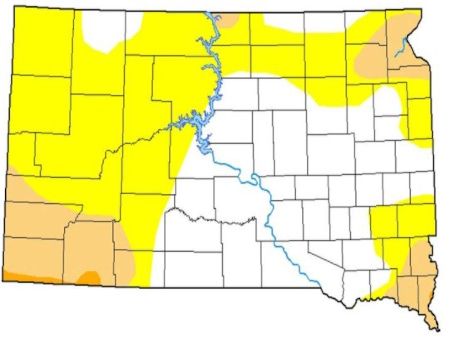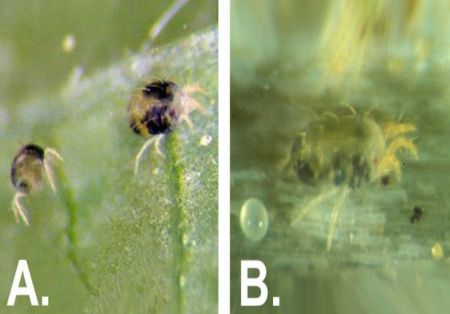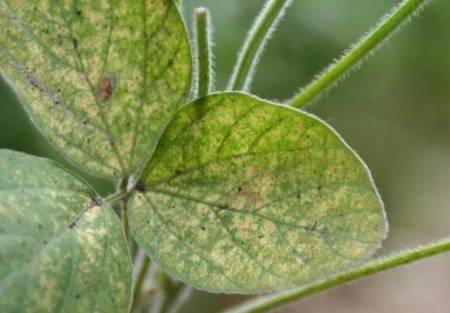By Adam Varenhorst
Several counties in South Dakota are experiencing dryer than normal conditions, with D0 (abnormally dry) D1 (moderate drought) and D2 (severe drought) designations according to the United States Drought Monitor (Figure 1). Therefore, it is important to monitor crops for spider mites, as they thrive during periods of dry weather.
There are two species of spider mites that can be problematic in South Dakota crops. They are the two-spotted spider mite (Figure 1-A) and the Banks grass mite (Figure 1-B). Although both species of spider mites can be an issue for corn, only the two-spotted mite is a pest of soybean. Both species of mites are susceptible to pathogenic fungi that is capable of wiping out their populations. These fungal pathogens require humidity to thrive, which is one of the reasons why spider mites are more of an issue during hot, dry conditions.

Figure 1. United States Drought Monitor: South Dakota, July 30, 2020.
Management Considerations
There are several predators that can be effective at managing spider mite populations.
Spider mite issues can often occur after an insecticide is applied for a different pest. Insecticide applications may reduce the number of spider mite predators, which allows spider mite populations to increase rapidly and potentially cause yield loss.
Although there may be spider mites still in the field, management decisions should be made carefully.
For corn, management at or after the dent stage is not economical. Typically, spider mite management needs to occur between the pre-tassle and soft dough stages of corn.
For soybean, the two-spotted spider mite can be an issue throughout the reproductive stages.
The leaves of infested crops will have small yellow or white spots on them, which are the result of spider mite feeding (Figure 3). This type of feeding injury is called stippling. In addition, the leaves may also have webbing on them, which is an indicator for two-spotted spider mites.

Figure 2. A) Two-spotted spider mites. B) Banks grass mite.

Figure 3. Two-spotted spider mite stippling injury on soybean leaves.
Table 1 provides a rating system for determining if management of two-spotted spider mites is necessary. Remember that the rating system should be used when scouting soybean on a weekly basis.
TABLE 1. TWO-SPOTTED SPIDER MITES TREATMENT GUIDELINES*
| Presence of Mites and Plant Damage | Rating and Decision |
|---|
| Mites barely detected on underside of leaves in dry locations or field edges and plant damage minimal or non-existent. | - Non-economic
|
| Mites easily detected on underside of leaves in dry locations or field edges but difficult to find within the field. Leaves are still green but with stippling present on some plants. | - Non-economic, keep monitoring
|
| Most plants are infested, and most plants have stippling. Speckling and discoloration of lower leaves. Field edges and dry areas exhibit damage. | - Treatment is warranted, especially if eggs and nymphs are found with adults
|
| All examined plants are heavily infested with mites, discolored and wilted leaves are easily observed throughout the field. Severe damage evident. | - Treatment may be warranted; rescue treatment that may recover yield
|
| Extremely high mite infestation, with the majority of the field discolored. Leaves are bronzing and falling from the plants. | - Treatment may not recover yield
|
Source : sdstate.edu